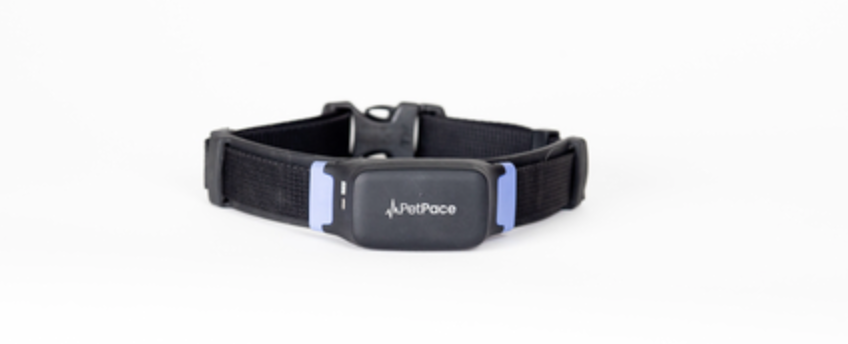Earthquakes are notoriously hard to predict, but dogs could help bridge the gap.
Originally Published on: ABC News
By: Julia Jacobo
Video by: Nicolas Rothenberg
May 2, 2024, 5:03 PM
A device that dogs wear on their collar could finally make use of thousands of years of anecdotes detailing a change in behavior in animals at the precipice of an earthquake.
Creators of the PetPace biometric collar, initially designed to track health data from dogs for early warning signs of disease, believe the physiological data it records has the capability of enhancing short-term earthquake forecasting,
Measurements for the canine-wearer’s pulse, heart rate variability, temperature, respiration, and activity are recorded and sent to the PetPace cloud in real-time, Asaf Dagan, chief scientist and cofounder of PetPace, the parent company of Animal Alerts, told ABC News. An AI algorithm then determines the dog’s overall stress level.
“The idea is that if we can track the behavior and the anxiety levels of animals…and then we use AI and machine learning advanced models to correlate that with geophysical data like earthquakes of different magnitudes,” Dagan said.
The company sought pet owners spread across a geographical area who volunteered to have their dog wear the smart collar. If all of the dogs respond in the same timeframe, the algorithm can likely identify a pattern that an earthquake may be on its way, Dagan said. Dogs in a region with little seismic activity will also be monitored as a control group.
The project, titled Animal Alerts, is currently underway in Lima, Peru, which experiences 90% of all seismic activity around the world due to is location along the Pacific Ring of Fire.

The earliest-ever reference to unusual animal behavior prior to a significant earthquake occurred in 373 BC in Greece, according to the U.S. Geological Survey.
Varying species — such as rats, weasels, snakes and centipedes — reportedly left their homes and headed for safety several days before a destructive earthquake struck the region, according to the USGS.
Other historical anecdotal evidence points to fish, birds, reptiles and insects exhibiting strange behavior anywhere from weeks to seconds before an earthquake, the USGS said. Cats, elephants and toads have also been observed to exhibit behavior changes upon a pending seismic event, according to the American Kennel Club.
Evidence leading up to recent decades has largely been anecdotal, according to a 2018 paper published in the Bulletin of the Seismological Society of America that examined 180 previous studies.
The public perception widely views abnormal animal behavior as a potential precursor to an earthquake, according to the paper. Scientists are still searching for consistent and reliable behavior among animals prior to a seismic event, according to the USGS.

Researchers from Germany filmed red wood ants that nest along a fault line in the Neuwied Basin, a seismically active region in Eifel, Germany, and studied the ants’ behavior hours before the earthquake, according to a 2013 study. The scientists found that the ants’ nocturnal rest phase and daily activity was suppressed ahead of seismic activity, and their standard daily routine did not resume until the next day.
In a 2020 study, researchers at the Max Planck Institute of Animal Behavior and the University of Konstanz in Germany wrote that they precisely measured an increase in activity in a group of farm animals prior to seismic activity.
The scientists measured the activity of multiple cows, dogs and sheep at a farm near the epicenter of the 6.6-magnitude earthquake that struck near the Norcia Basin in central Italy in October 2016 and found that strong reactions among the animals before magnitude 3.8 or greater earthquakes when they were housed together in a stable, but not when they were out to pasture, according to the study. Prior to the earthquake, the animals were outfitted with biologgers and GPS sensors, highly sensitive instruments that record accelerated movements in any direction — up to 48 each second.
The farm animals appeared to anticipate tremors anywhere from one to 20 hours ahead, according to the study. They reacted earlier when they were closer to the origin and later when they were farther away, but a clear link for the changes in behavior was not established.
Earthquake geologist Wendy Bohon expressed skepticism at the notion that a smart collar for dogs could aid in predicting earthquakes, despite how “interesting” of a concept it may be, she told ABC News.
“I have never seen a convincing study that shows that animals can predict earthquakes, or that animals know that an earthquake is going to happen before it happens,” Bohon said.

Earthquakes are difficult to predict because there is currently no evidence that there are precursors to seismic activity, Bohon said.
“We just haven’t found anything,” she said.
Dogs are uniquely suited to behavioral response observation because of their acute sense of smell and sound that detects stimuli that humans cannot, Dagan said.
“Dogs are particularly useful models of this phenomenon due to their acute senses and their close proximity to humans,” Rachell Grant, behavioral ecologist at London South Bank University and lead for the Animal Alert project, said in a statement.
Dogs can smell odors and hear high-pitched noises undetectable to humans, giving them the ability to sense things outside human perception, according to the American Kennel Club. A 2012 paper that looked into whether dogs can have Seasonal Affective Disorder found that 49% of the dogs showed a significant increase in anxiety the day before a 6.8-magnitude earthquake struck the Pacific Northwest in February 2001. In addition, 47% off the dogs were considerably more active — a sharp increase from the steady day-to-day averages that were collected up to that point, the study found.
The pups are likely sensing and reacting to something unusual. The dogs may be picking up on foreshocks, the smaller earthquakes that occur before a larger one, or acoustic waves generated by the movement of the tectonic plates, the organization said.
“Sometimes animals might feel the arrival of the waves from far away that are too small for us to feel,” Bohon said. “…And so we don’t notice those first small waves arriving so it may seem like the animals are predicting the earthquake, when in reality they’re reacting to the first arrivals of the waves that we’re just not tuned into.”

These primary, or “P” waves, are the first to be emitted fro the earthquake and travel at a rate of several miles per second from the epicenter, which could make them more noticeable to animals, according to the USGS.
Very few humans notice the smaller “P” waves, which arrive before the larger “S” waves, the USGS said.
The dogs could also be sensing the ionization of air at pressurized rock surfaces as well as changes in electrical field or the smell of chemicals that are released.
But there is no conclusive evidence to show that dogs can predict tremors, the organization said.
The idea that observational data could be used to predict an oncoming earthquake has been touted in the past. Researchers in 2018 proposed that crowdsourcing and social media might help to predict earthquakes and developed a prototype for social media users to upload posts about abnormal animal behavior.
Social media users claimed that animals behaved strangely in the hours before a 7.8-magnitude earthquake struck Turkey in February 2023, killing more more than 21,000 people. The behavior reported included birds flying erratically and dogs howling loudly, The Washington Post reported.
There is currently no existing technology that can reliably predict earthquakes.
In 2015, researchers noticed changes in animal behavior three weeks before a 7.0 magnitude quake in an Amazon region of Peru in 2011 using a series of cameras suggesting that animals could be an affordable earthquake warning system, a study published in the journal Physics and Chemistry of the Earth found.
Scientists want as much data as they can get, and this approach could increase the sample size of animal behavior prior to an earthquake that have already been studied, Bohon said.
“We want all the data and information that we can get, so that we can explore every possibility,” she said. “But extraordinary claims require extraordinary evidence.”


